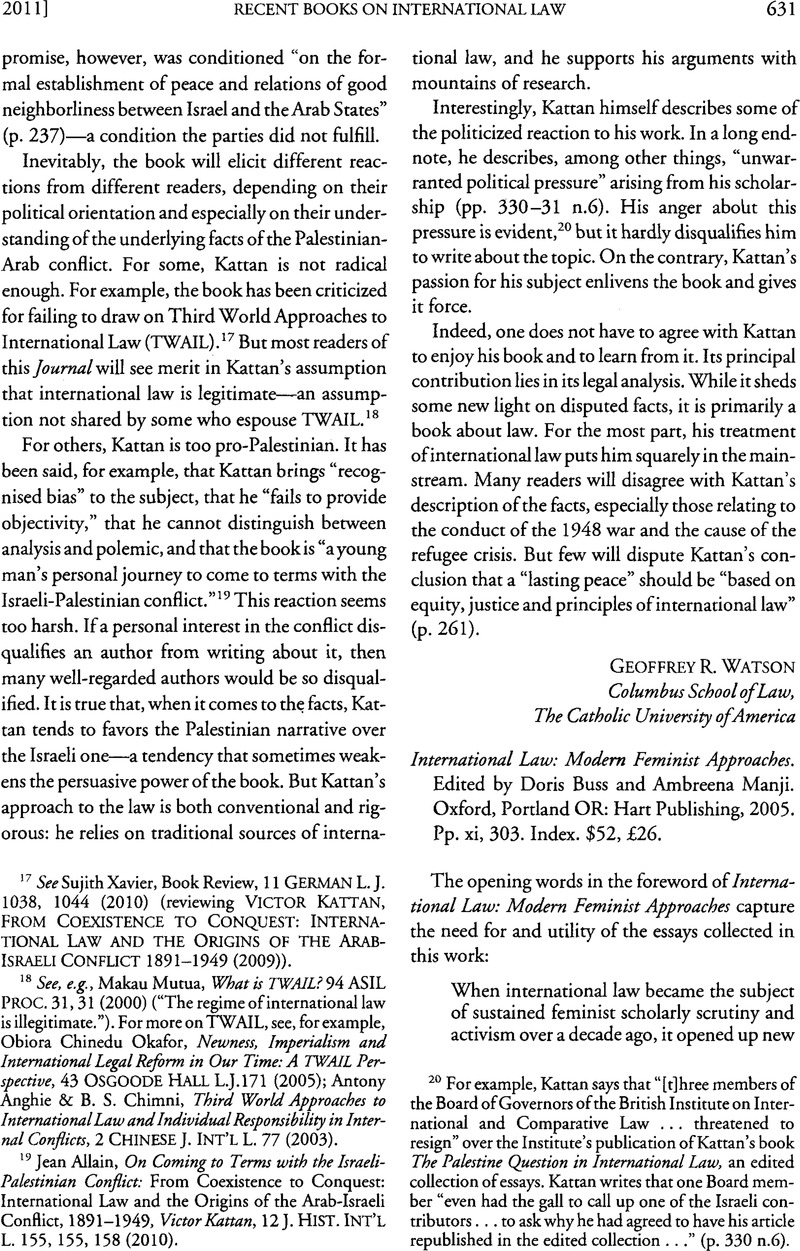No CrossRef data available.
Article contents
International Law: Modem Feminist Approaches. Edited By Doris Buss and Ambreena Manji. Oxford, Portland OR: Hart Publishing, 2005. Pp. xi, 303. Index. $52, £26.
Published online by Cambridge University Press: 02 March 2017
Abstract

- Type
- Recent Books on International Law
- Information
- Copyright
- Copyright © American Society of International Law 2011
References
1 See Legal Feminism Now, 9 Issues in Legal Scholarship (Special Issue) (Abrams, Kathryn ed., forthcoming 2011), at http://www.bepress.com/ils/ Google Scholar.
2 Halley, Janet, Split Decisions: How and Why to Take a Break From Feminism (2006)Google Scholar.
3 Berta Esperanza, Hernández-Truyol, Unsex CEDAW? No. Super Sex It! , 20 Colum. J. Gender & Law (forthcoming 2011)Google Scholar. But see Rosenblum, Darren, Unsex CEDAW: What’s Wrong with Women’s Rights , 20 Colum. J. Gender & Law (forthcoming 2011)Google Scholar (arguing that “CEDAW should instead focus on the category of discrimination women face—sex (or gender) discrimination—rather than establishing women as its sole beneficiaries”).
4 See Hernández-Truyol, supra note 3; see also Berta Esperanza, Hernández-Truyol, On Que(e)rying Feminism: Reclaiming the F Word , Issues in Legal Scholarship Google Scholar, supra note 1.
5 For an overview of the various feminisms in international law, see Berta Esperanza, Hernández-Truyol, Crossing Borderlands of Inequality with International Legal Methodologies—The Promise of Multiple Feminisms , 44 Ger. Y.B. Int’l L. 113 (2001)Google Scholar.
6 Asking about women’s human rights advocacy has motivated other critics thinking about international law. See, for example, Rosenblum, supra note 3
7 For a full treatment of this engagement, see id.
8 Berta Esperanza, Hernández-Truyol & Powell, Stephen J., Just Trade: A New Covenant Linking Trade and Human Rights in the Americas 192 (2009)Google Scholar (discussing the Bebel Redux); see also Sarfaty, Galit A., Why Culture Matters in International Institutions: The Marginality of Human Rights at the World Bank , 103 AJIL 647 (2009)Google Scholar.
9 It should be noted that chapter 7 uses the script of the American Western to show that the legal order is masculine and the subject is male, linking frontier justice to the American rule of law. This script also reinforces the subordination of women and the hierarchy in the worth of women.
10 LatCrit is an example of a movement that pursues an anti-subordination goal and seeks to work in the context of the multidimensionality of persons. For information on LatCrit, see www.latcrit.org.




